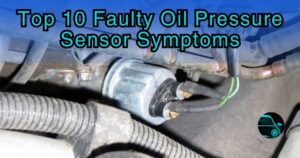What to do when oil light comes on can be a very puzzling question. Seeing your car’s oil light come on can be a moment of concern for any driver. It’s like the car is saying, “Hey, I need a little attention here!” But before you let panic set in, it’s essential to understand what the oil light means and what steps you should take to address the issue safely and effectively. This comprehensive guide will delve into the essential actions on what to do when oil light comes on, ensuring you’re prepared to handle this situation with confidence.
Understanding the Oil Light Indicator
When the oil light on your dashboard illuminates, it signals a potential issue with your vehicle’s oil pressure or level, a crucial factor for engine health. Understanding what to do when oil light comes on is vital for preventing damage to your engine, which can be costly to repair. The oil light can indicate anything from a simple need for more oil to a serious problem requiring immediate attention.
Firstly, when the oil light comes on, it’s essential to safely pull over and turn off the engine as soon as possible. This prevents further damage by reducing the risk of running your engine without sufficient lubrication. Checking the oil level using the dipstick is a good next step; if it’s low, adding oil might be the quick fix you need. However, if the oil level is fine, the issue might be more complex, such as a faulty oil pump or a leak in the system.
Knowing what to do when oil light comes on also means recognizing when professional help is needed. If adding oil doesn’t turn the light off, or if there’s no obvious reason for the light, it’s time to consult a mechanic. Ignoring the oil light can lead to severe engine damage, emphasizing the importance of taking immediate action.
In summary, when the oil light comes on, it’s a clear signal to check your oil level and pressure, and possibly seek expert advice, ensuring your vehicle remains in optimal condition.
What to do When Oil Light Comes on
1. Don’t Panic, Act Now!
The first rule of thumb when the oil light illuminates is not to panic. Panic can lead to hasty decisions that might aggravate the situation. Instead, take a deep breath and prepare to act responsibly.
2. Check Your Oil Level
When that ominous oil light illuminates your dashboard, it’s crucial to act swiftly to prevent potential engine damage. The second, and perhaps most essential, step is to check your oil level – a fundamental part of understanding what to do when oil light comes on. This can be quickly done by locating the oil dipstick under your hood, pulling it out, wiping it clean, and then reinserting it to get an accurate measurement.
If the oil level appears low, topping it up with the appropriate type of oil for your vehicle could turn off the light and save your engine from undue stress. This immediate check is a vital response to ensure your car’s health and longevity.
3. Listen for Unusual Noises
When the oil light on your dashboard comes on, it’s not just about what you can see, but also what you can hear. Listening to unusual noises is a critical step in addressing the issue. If you hear knocking or rumbling sounds from the engine after the oil light illuminates, it’s a clear indicator that the engine is not being properly lubricated. These sounds can signal severe damage in progress, underscoring the urgency of the situation.
It’s an essential part of understanding what to do when oil light comes on, as catching these auditory clues early can prevent catastrophic engine failure. Act immediately by turning off the engine and consulting a professional mechanic to diagnose and resolve the issue, ensuring your vehicle’s safety and reliability.
4. Assess the Situation
If, after checking the oil level, you find it’s within the acceptable range, yet the light remains on, the issue might be more complex, such as a faulty oil pump or a problem with the oil pressure sensor. In such cases, driving the car could cause severe damage to the engine.
Understanding the Causes
Several factors can trigger the oil light, including:
– Low Oil Level: The most common and easily fixable cause. Regularly check your oil levels and top up as needed.
– Oil Pressure Issues: A failing oil pump or blockages in the oil system can lead to low oil pressure.
– Faulty Oil Pressure Sensor: Sometimes, the sensor that triggers the oil light might malfunction, displaying the warning light erroneously.
– Worn Engine Components: Over time, engine parts wear down, which can lead to reduced oil pressure.
Preventive Measures
Preventive measures are your first line of defense against the dreaded moment when your oil light warns of potential trouble. Here’s a detailed guide on what to do to prevent your oil light from coming on, ensuring your car’s longevity and smooth operation:
1. Regular Oil Changes: This cannot be overstressed. Adhering to your vehicle’s recommended oil change schedule is crucial. It’s a simple yet effective way to prevent issues that could cause the oil light to come on. Regular changes ensure your engine is lubricated with fresh oil, free from contaminants that can wear down engine components.
2. Check Oil Levels Frequently: Between oil changes, make it a routine to check your oil level at least once a month. Low oil levels can trigger the oil light, indicating it’s time to top up. This is a straightforward preventive step you can take without needing a mechanic.
3. Use the Right Oil: Always use the oil type recommended by your car manufacturer. The correct oil ensures optimal engine performance and can prevent the oil light from coming on due to inadequate lubrication or incorrect oil pressure.
4. Inspect for Leaks: Regularly inspect your vehicle for signs of oil leaks, especially if you notice a drop in oil levels without any apparent reason. Identifying and fixing leaks early can prevent serious engine damage and keep the oil light off.
5. Heed Warning Signs: Lastly, if you notice any changes in your car’s performance or hear unusual noises, don’t ignore them. These could be early signs of oil-related issues. Addressing these promptly can prevent situations where you’re left wondering what to do when oil light comes on.
By implementing these preventive measures, you significantly reduce the likelihood of facing oil light warnings. Remember, maintenance is key to avoiding panic situations and the question of what to do when oil light comes on.
When to Seek Professional Help
When the oil light illuminates your dashboard, it’s a clear signal that your vehicle may need immediate attention. Understanding what to do when oil light comes on is crucial to preventing potential engine damage. While checking your oil level and condition is a good first step, there are situations where professional help is necessary. Here are key indicators that it’s time to seek expert assistance:
1. Persistent Oil Light: If the oil light stays on after adding or changing oil, it could indicate a deeper issue, such as a malfunctioning sensor or an oil pump failure.
2. Engine Noise: Any unusual noises, like knocking or tapping, suggest that the engine isn’t being properly lubricated. This is a serious concern that requires a mechanic’s expertise.
3. Oil Pressure Gauge: If your vehicle has an oil pressure gauge and it reads low, this is another sign that what to do when oil light comes on involves a trip to the mechanic.
Ignoring these signs can lead to significant engine damage. Acting swiftly and consulting with a professional can save you time and money in the long run, ensuring your vehicle remains in top condition.
Conclusion
In conclusion, knowing what to do when your oil light comes on is crucial for every driver. This warning sign should not be ignored or underestimated. It’s a clear indication that your vehicle might be facing low oil pressure or a potential oil shortage, which, if left unattended, can lead to significant engine damage. To further explore this topic, consulting a ghostwriter could be beneficial, as they can assist in gathering comprehensive academic insights on vehicle maintenance. What to do when your oil light comes on involves immediate action—checking your oil level, assessing the situation, and, if necessary, seeking professional help.
Remember, this light is your vehicle’s way of telling you it needs attention. By responding promptly and appropriately, you can ensure your car remains in good condition, preventing more severe issues down the line. Let this be a reminder of the importance of regular maintenance and vigilance on the road.
FAQs
1. Can I drive my car with the oil light on?
It’s not recommended to drive with the oil light on. Doing so can cause significant damage to your engine.
2. How often should I check my oil level?
It’s a good practice to check your oil level at least once a month and before any long trips.
3. What type of oil should I use for my car?
Refer to your car’s owner’s manual for the manufacturer’s recommended oil type.
4. Can a faulty oil light cause damage to my car?
While a faulty oil light itself won’t cause damage, ignoring potential underlying issues that it might be indicating can lead to severe damage.
5. How much does it cost to fix the oil light issue?
Costs can vary widely, depending on the cause. Simple fixes like topping up oil are inexpensive, while addressing low oil pressure or faulty components can be more costly.




